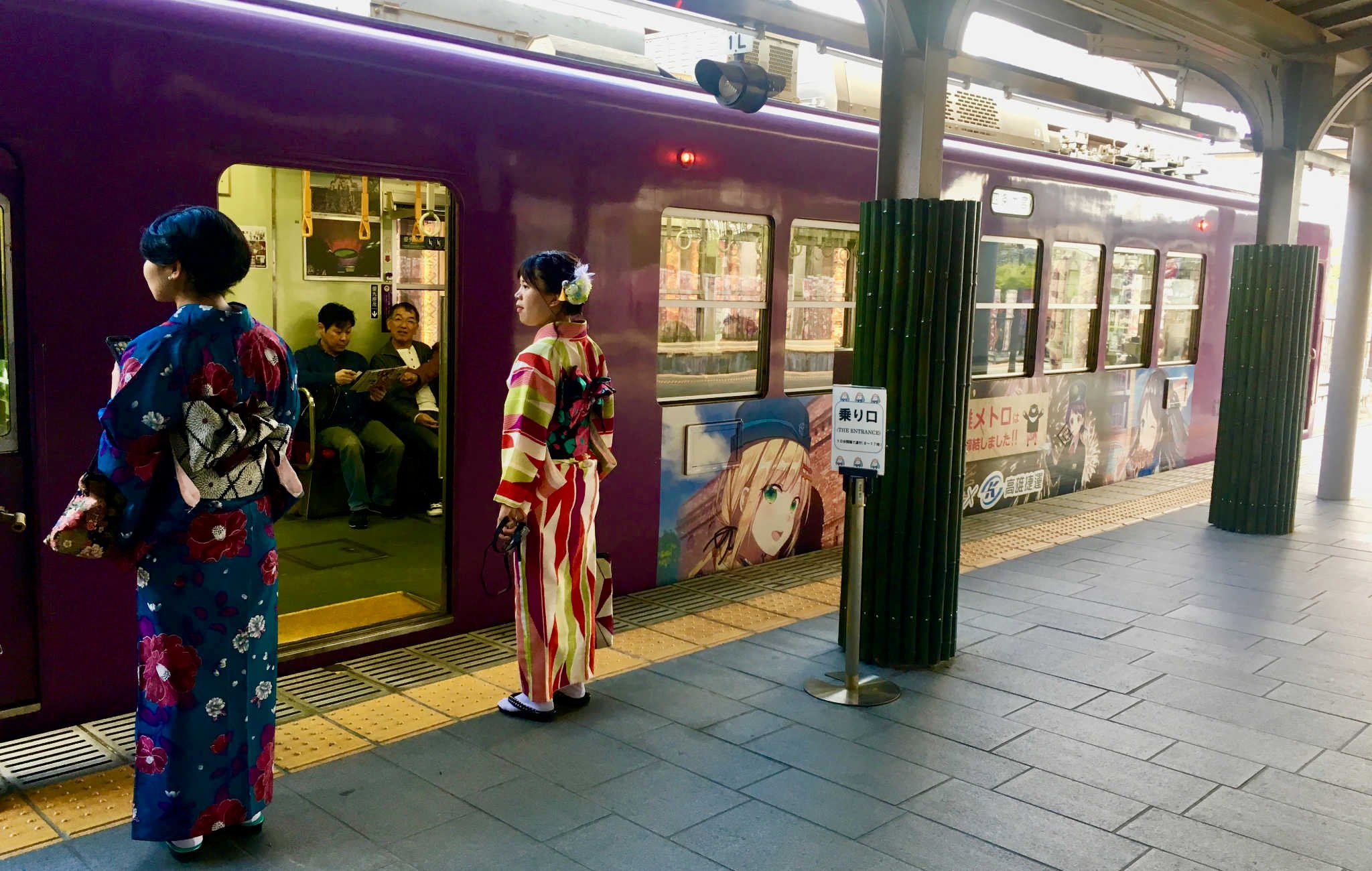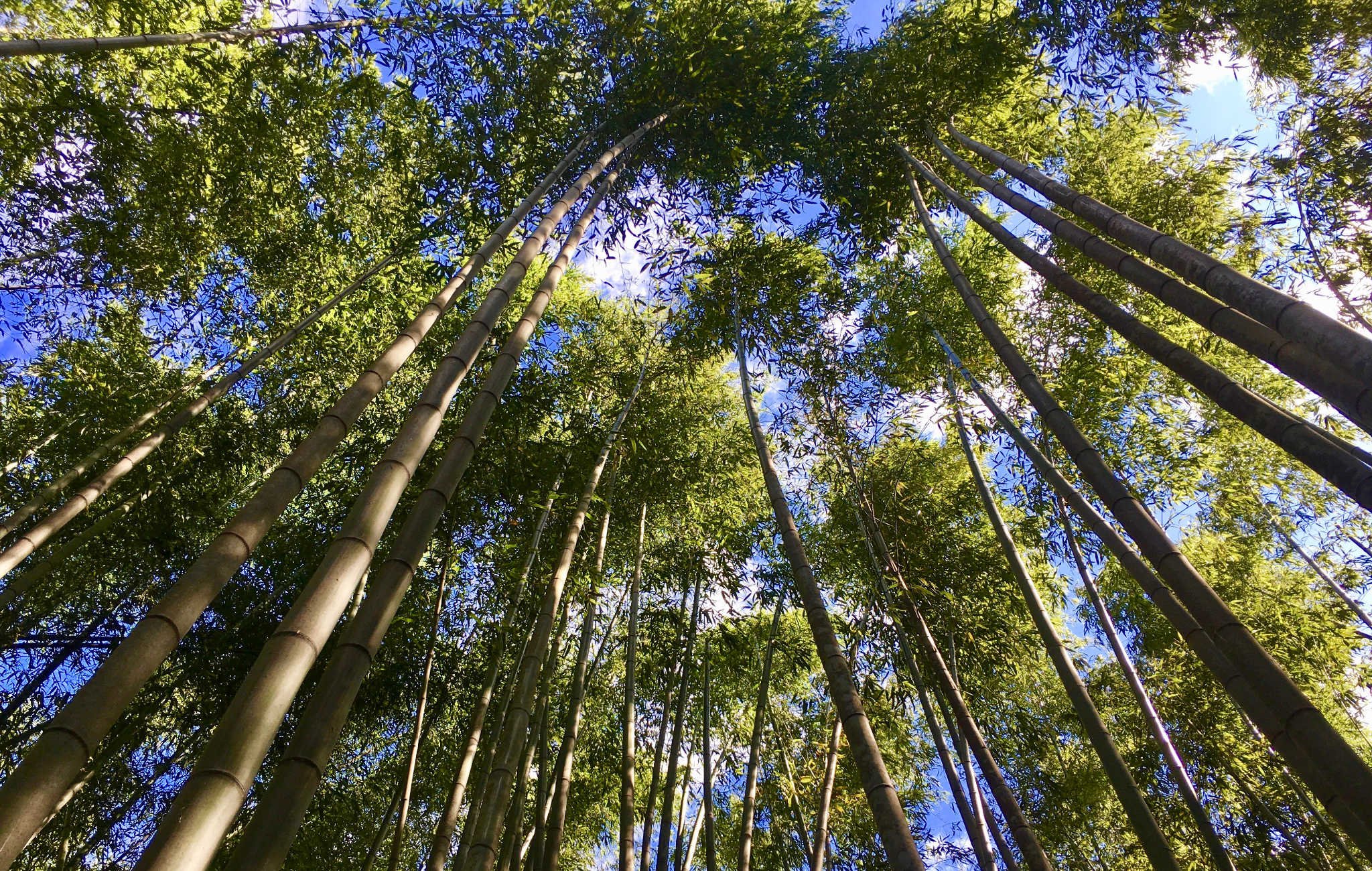This is an authorized translation in English of a post in French by @japon: Arashiyama, le quartier à l’Ouest de Kyoto et sa bambouseraie
As my primary language is not English, there are probably some mistakes in my translation.
Remember that the person that speaks here is NOT me, Vincent Celier (@vcelier), but @japon, a French guy.
This is my last day in Kyoto. Time passes so quickly and I see myself taking my first steps on the Japanese floor as if it were yesterday. I still enjoyed the old imperial capital, but I still had an important area to see: Arashiyama.
It is a place apart in Kyoto, famous for both its temples and its openness to nature. As soon as I arrived, after a few minutes by train from Kyoto Central Station, I went to the banks of the Katsura River. The Togetsukyo Bridge offers an impressive view of the surrounding nature.

In the spring, the mountains in front illuminate with the pastel color of sakura cherry trees. In the fall, they shine brightly with the colors of maples. In fact, there was beginning to have some colors, signs of autumn approaching.
Arashiyama is also a busy shopping district, with many shops to buy souvenirs or local products. There is also Arashiyama station (not to be confused with JR station which is a little further). This is the traditional train station and the trains are nicely colored and decorated.

The main street leading to the Togetsukyo Bridge is still busy and packed with people. You can eat on the go, there are all kinds of local specialties.


And of course, there are the rickshaws! For a few yen, they bring you where you want. A romantic stroll par excellence, the porter also gives you a guided tour on the way. But it is also a mode of transport in its own right. Although many sites are close to each other, in Arashiyama we walk a lot. During the day I made more than 15 kilometers without realizing it.
First step of the day: the bamboo plantation! I knew the place was popular so I arrived at 8AM to be sure I could enjoy it. And there were other tourists already there. It's still impressive to find yourself in the middle of these stems that culminate at more than 20 meters high. And the rustling of the wind in the bamboo foliage is simply magical.



An iconic place in Kyoto, the bamboo plantation served as a setting for several films or reports. Although the city has other forests of this type, Arashiyama is the largest. For more than 500 meters, I walk on the paths lined with bamboos. The place is Zen, but not very quiet. Because of this weird noise ...
I hear sounds of saw, chainsaw ... The typhoon that had passed a few days earlier had ruined this beautiful forest. Many bamboos are broken, lying down. Several people are busy cleaning and putting everything back in order.

Soon, the place fills with people, it becomes impossible to take a photo without having 30 people in front of you. Yet it is only 9 o'clock. It's time for me to go to the next stage of this day in Arashiyama.
-- @japon
01: Travel diary in Japan, by @japon
02: Tokyo, overcrowded city? Really? by @japon
03: Are the Japanese too disciplined? by @japon
04: Going to Japan without speaking Japanese? by @japon
05: Ueno, more than just a big park in Tokyo, by @japon
06: Asakusa, diving in the heart of Tokyo's historic district, by @japon
07: Ameyoko, Ueno's colorful market, by @japon
08: Tsukiji, the largest fish market in the world, by @japon
09: Climb the steps of Atago Jinja Shrine in Tokyo, by @japon
10: Hama Rikyu, an exceptional park in the heart of Tokyo, by @japon
11: Jimbocho, old books and tempura, by @japon
12: Shinjuku Gyoen Park and the best burger in the world!, by @japon
13: One night in Shibuya, by @japon
14: Takeshita dori : this little street dedicated to fashion (and good crepes), by @japon
15: They lie to you about Kyoto, by @japon
16: The temples and secret garden of Higashi in Kyoto, by @japon
17: Kinkaku-ji, the temple of the Golden Pavilion in Kyoto, by @japon
18: Ryoan-ji, the amazing stone garden in Kyoto, by @japon
19: The Ninna-ji Temple and its extraordinary gardens, by @japon
20: Kyoto Gyoen, the Imperial Palace Park, by @japon
21: Nishiki Market: A Must in Kyoto, by @japon
22: Ginkaku-ji, the temple of the silver pavilion in Kyoto, by @japon
23: Meditate on the path of philosophy, by @japon
24: Nanzen-ji, its impressive gate and two gardens, by @japon
25: Heian-jinju: the big shrine and its garden that I almost missed, by @japon
26: Eikan-do, the temple of the momiji maples in Kyoto, by @japon
27: Kodai-ji, a Kyoto temple dedicated to a woman's love for her husband, by @japon
28: Sannenzaka and Ninenzaka, the streets of Higashiyama, by @japon
29: Kiyomizu-dera, the temple of pure water in Kyoto, by @japon
30: Tofuku-ji: the maple lookout point, by @japon
31: Makis, Yasaka-jinja Shrine and Maruyama Park, by @japon
32: Nijo Castle and its fabulous garden, by @japon
33:Departure for Osaka and its castle, and announcement of a typhoon, by @japon
34: Osaka, the garden Keitaku-en under a torrential rain, by @japon
35: Doguya-suji, the kitchen market in Osaka, by @japon
36: Dōtonbori, the bustling district of Osaka, by @japon
37: Back to Kyoto and Typhoons, meetings and reunions, by @japon
38: Sanjūsangen-dō, the temple of a thousand and one statues, by @japon
39: On the road to Fushimi Inari Taisha, by @japon
40: Daigo-ji, the large Buddhist complex built on a mountainside, by @japon
41: Departure for Nara, we look at the fallow deers and we mistake the garden, by @japon
42: Isui-en, the big Japanese garden of Nara, by @japon
43: Todai-ji, the temple with the huge Buddha statue in Nara, by @japon
44: Nara, from Nigatsu-dō to Kasuga, by @japon
